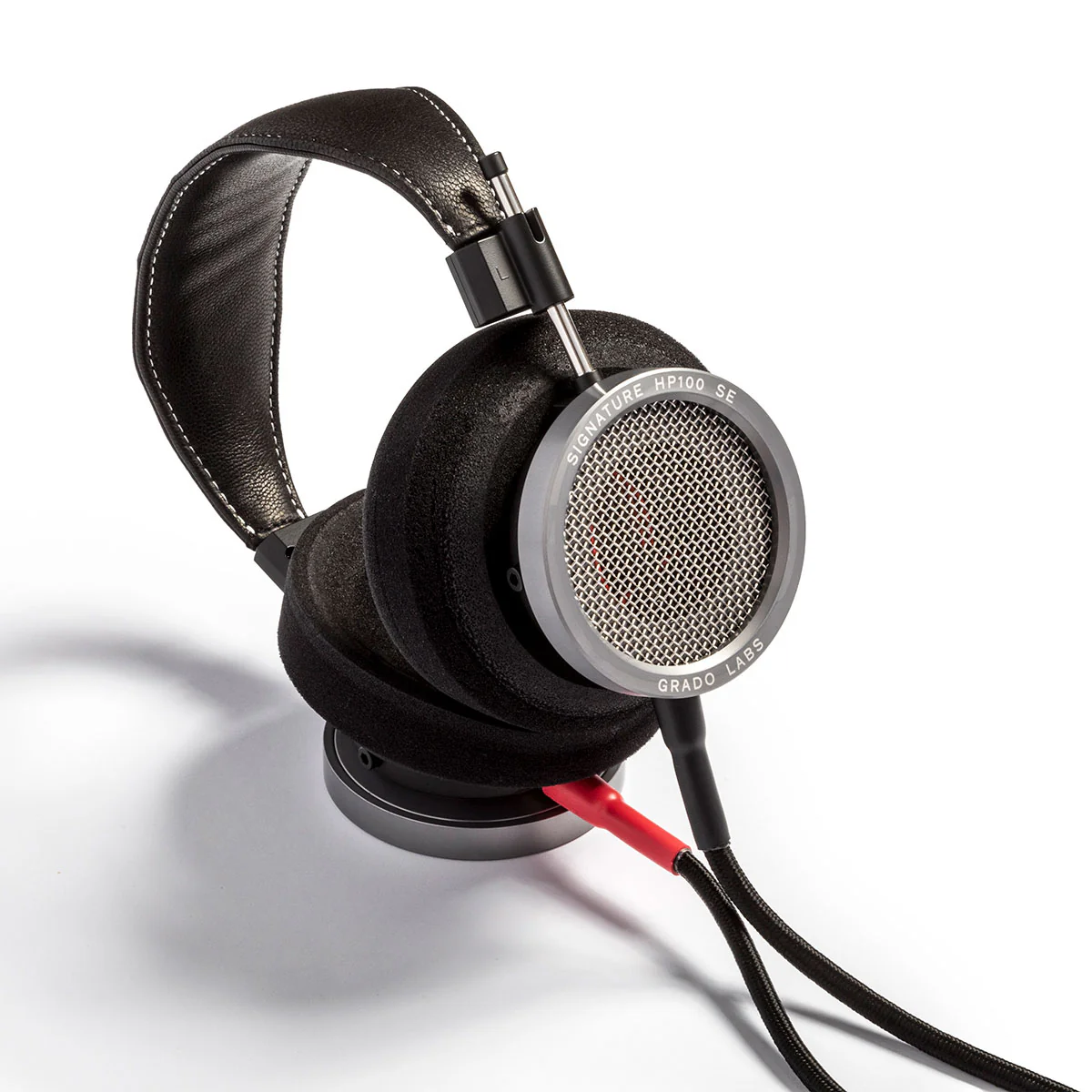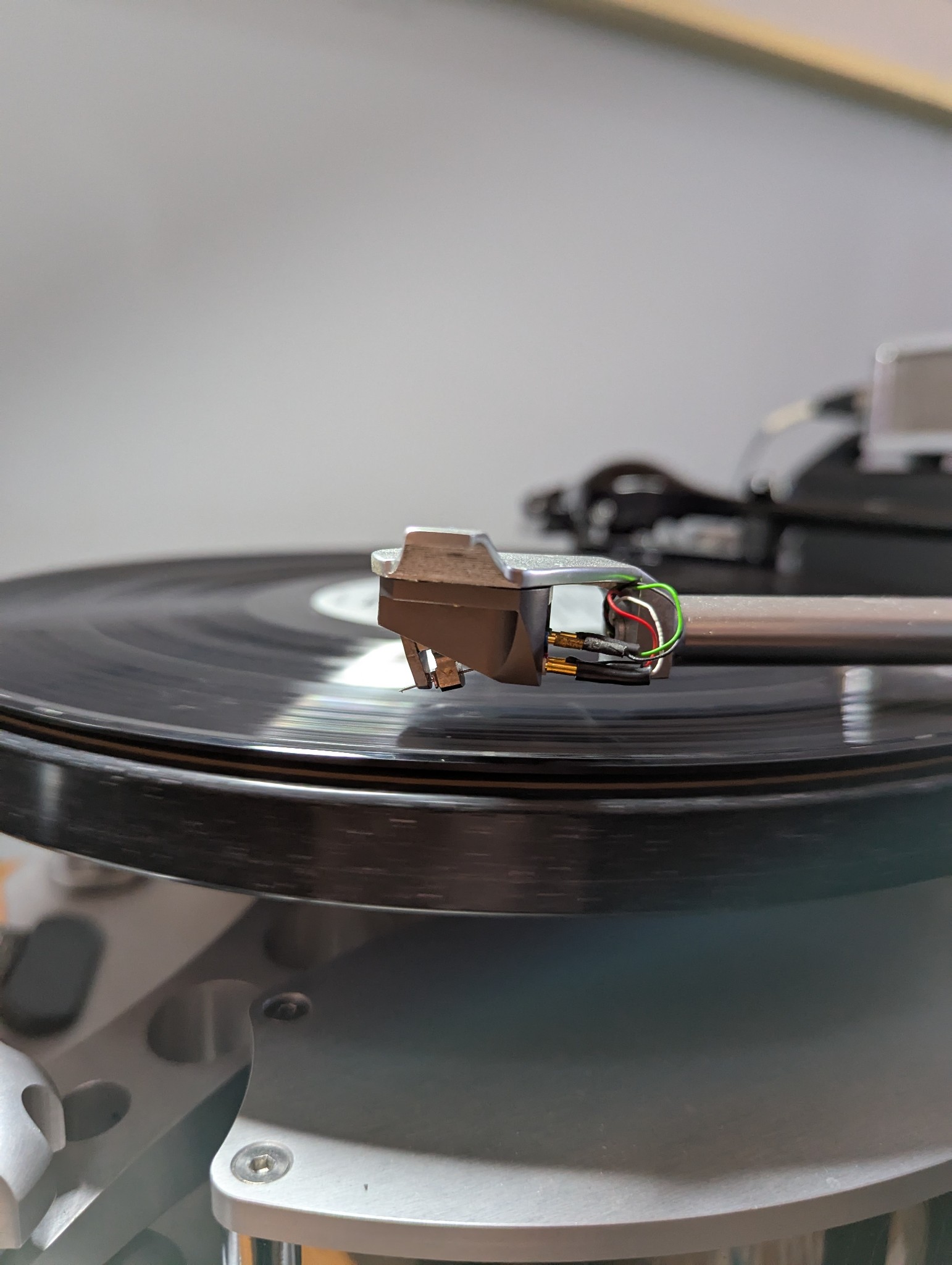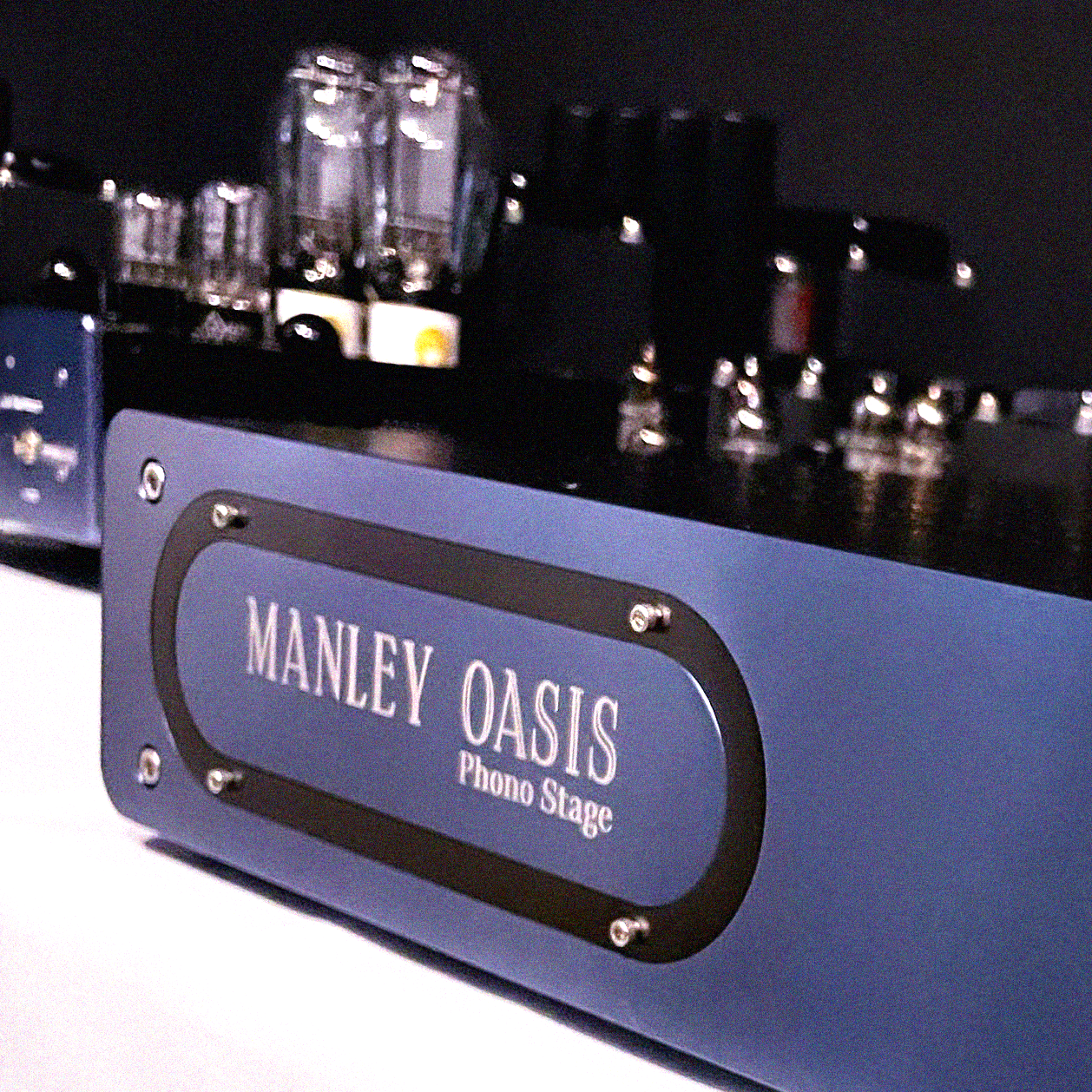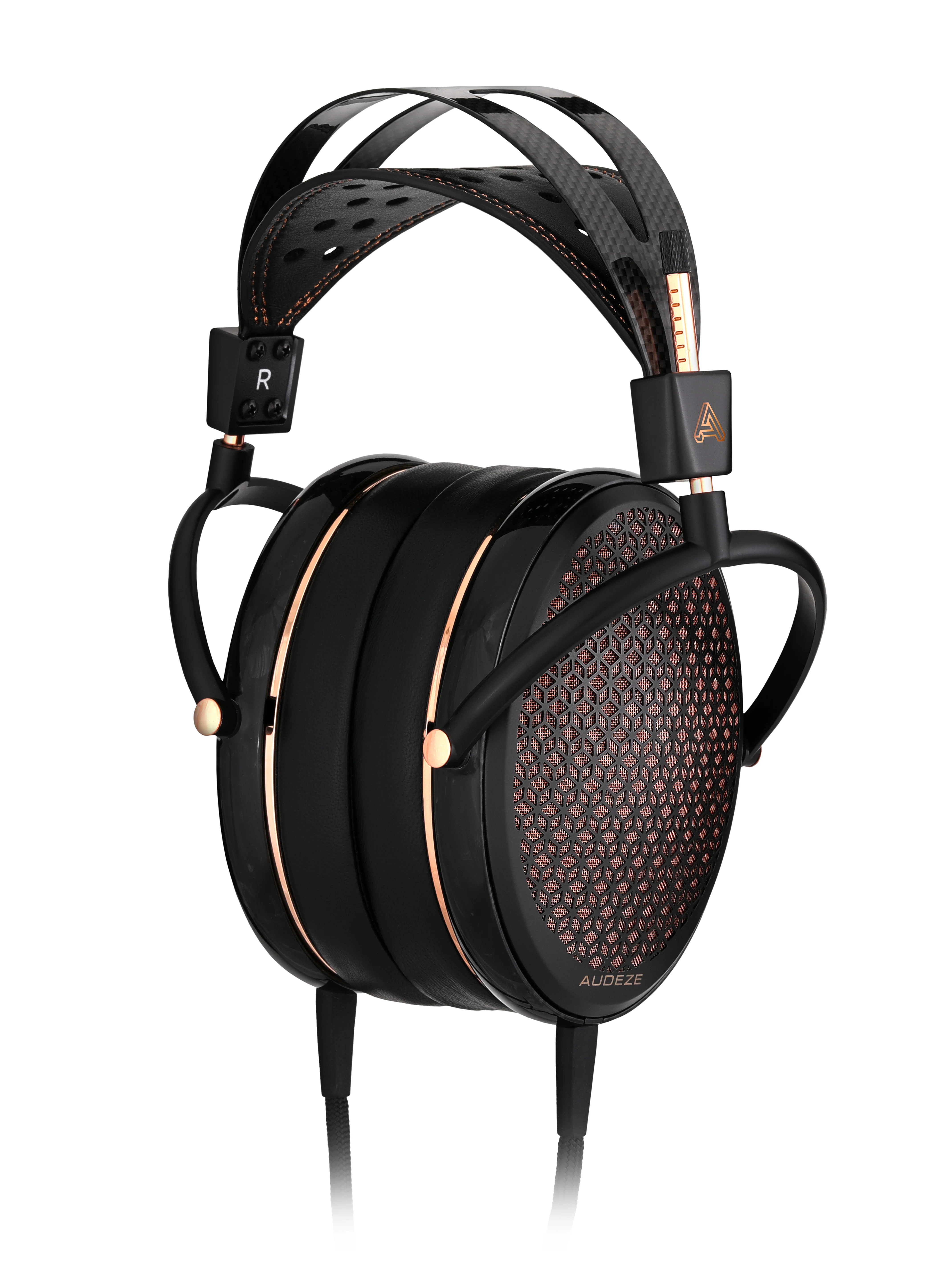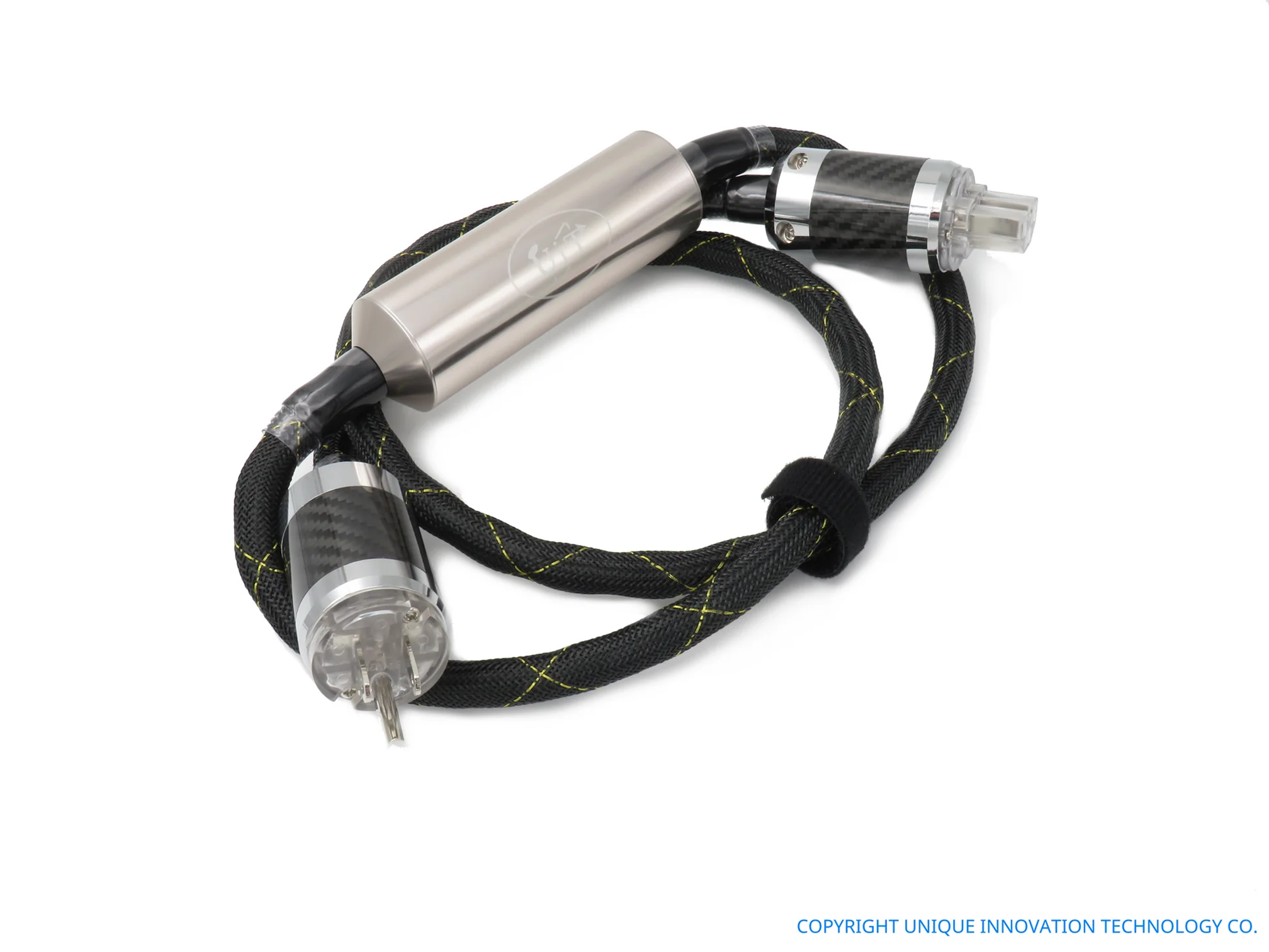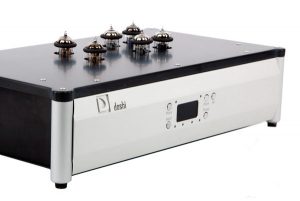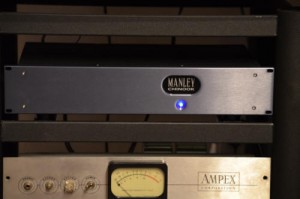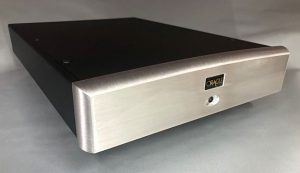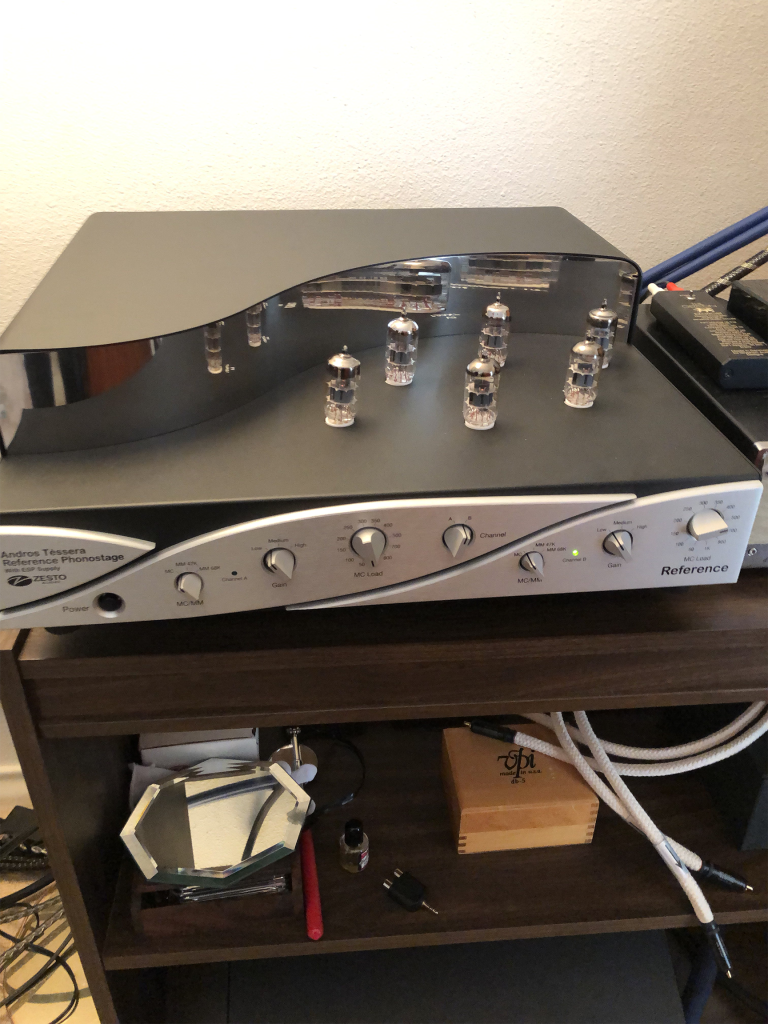
I had the good fortune of reviewing the excellent original Andros Téssera, which when spiced up with a few Mullard tubes, revealed extraordinary musical performance. I have since purchased a Zesto Audio Andros Deluxe II Phonostage with the introduction of the new tube combination and the massive upgrade in the power supply. Unlike the Téssera I reviewed, the Deluxe II revealed an even broader dynamic swing and sweeter musicality suggesting that something exciting was cooking in the Zesto Audio Laboratory. After two years(!) of R&D and many prototypes, George Counnas, Chief Zesto Master Engineer, has produced his masterpiece and Reference. The Reference is a cost is no object phonostage (in real-world terms), with a completely revised tube circuit, reflecting everything its designer knows and has learned to date. The Reference is an outstanding performer knocking on the door of perfection in phono reproduction, not to mention the most flexible phonostage extant.
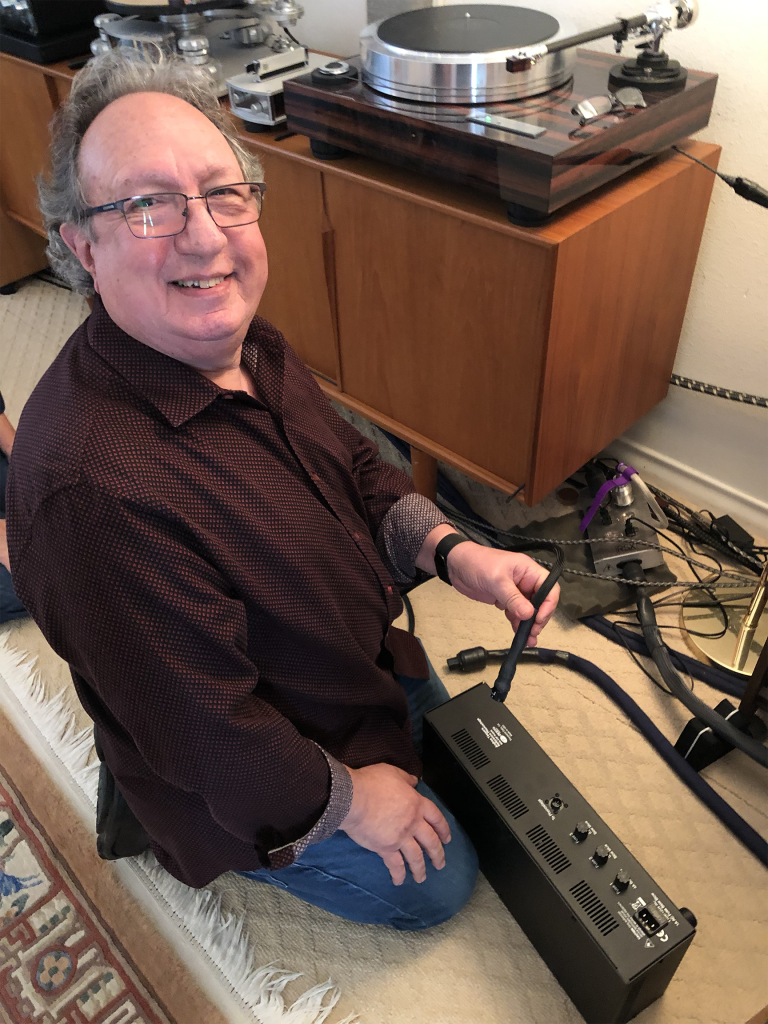
George Counnas, in situ...
The first questions I asked were how is the original Téssera different and what are the technical improvements in the Reference? The complete and very extensive comparisons are HERE. The most interesting and significant revisions to me include the use of two 12DW7 tubes premium sourced from JJ which is half 12AX7 and half 12AU7 in the same bulb. This enhances performance in many ways and eliminates the use of two additional tubes cluttering the circuit. Increases in the high voltage supply provide 17% more headroom. A 50% increase in dynamic range is included to extend peak levels to the stratosphere for drums and trumpets, etc. The dynamic range is now 116 dBV! Noise is now 95 dBV below output vs. 90 dBV originally. Every parameter of every control is more powerful and quieter.
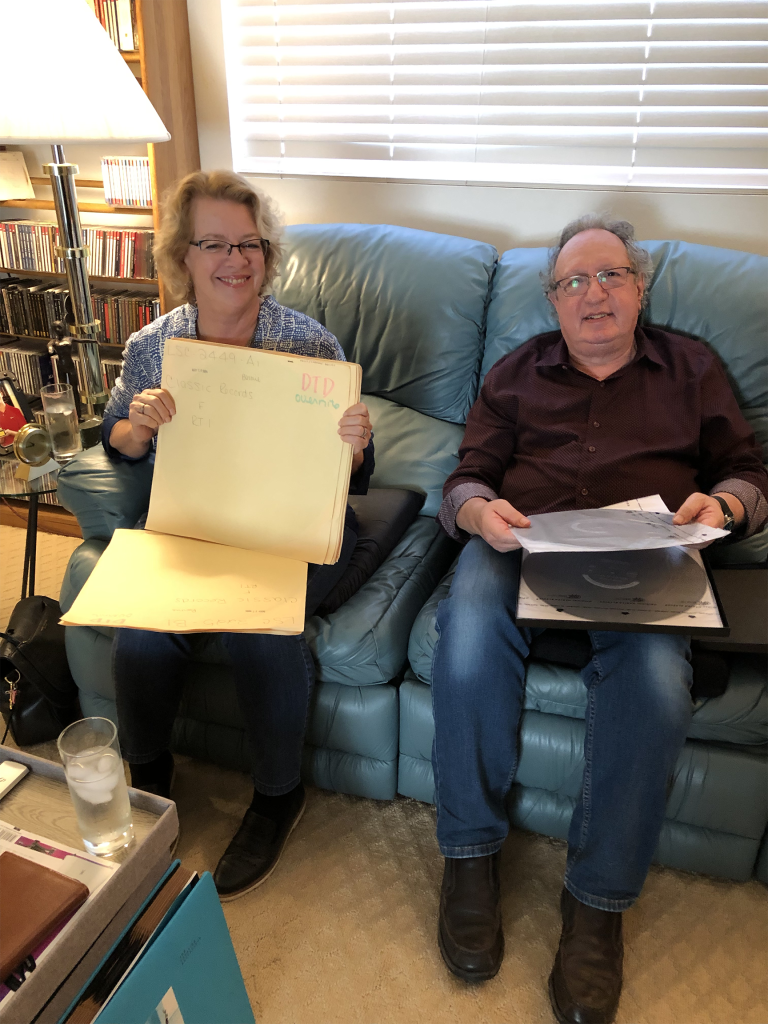
Carolyn and George Counnas of Zesto Audio
One of the most exciting revisions, a major achievement I might add, is Zesto developing a circuit to maximize its gold pin premium JJ tubes. Its past designs have benefitted from tube rolling Mullards, Brimars, and other expensive NOS types to maximize the musicality. In listening to the Reference, I found that a simple tube damper on 4 of the tubes was all the machinations the tube set required to achieve best performance all around. No dampers were required on the 12AX7 tubes. NOS tubes actually reduced the musicality or dulled the performance of the Reference unacceptably. What a surprise! Here is a manufacturer that has maximized the performance of currently available tubes to the user's benefit.
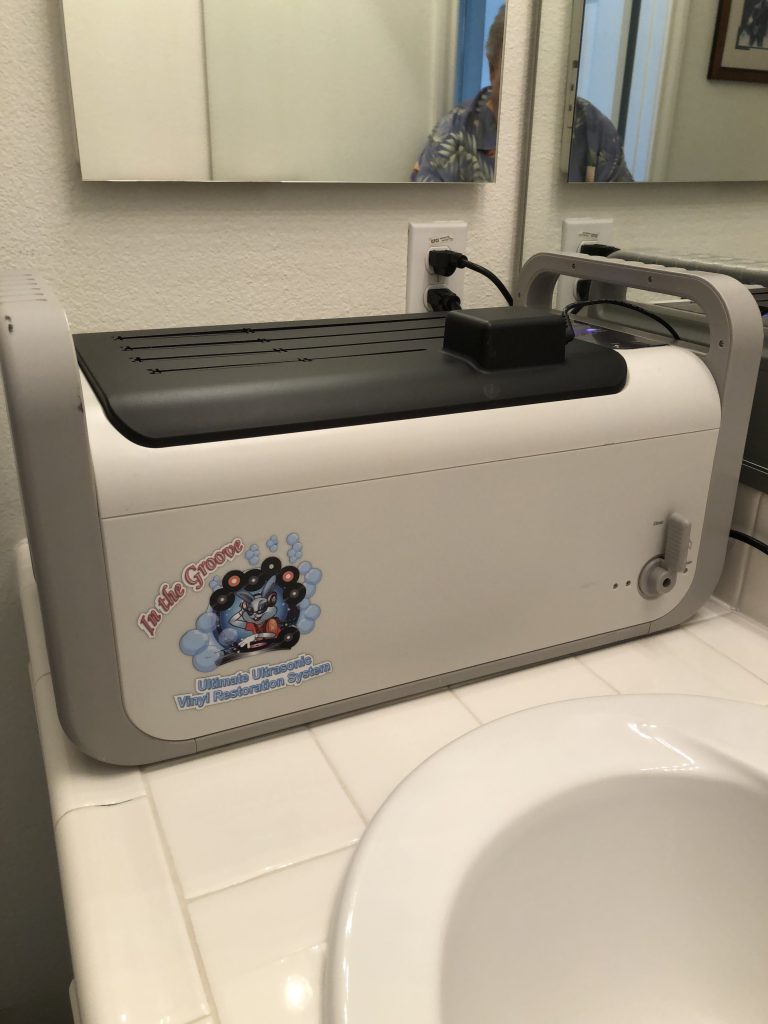
In reviewing the Reference, I made sure every LP was washed or restored with the Kirmuss KA-RC-1 Ultrasonic Record Restoration System. At the least, I used the two-minute rinse on recently restored records before listening. The Kirmuss is well worth the effort.
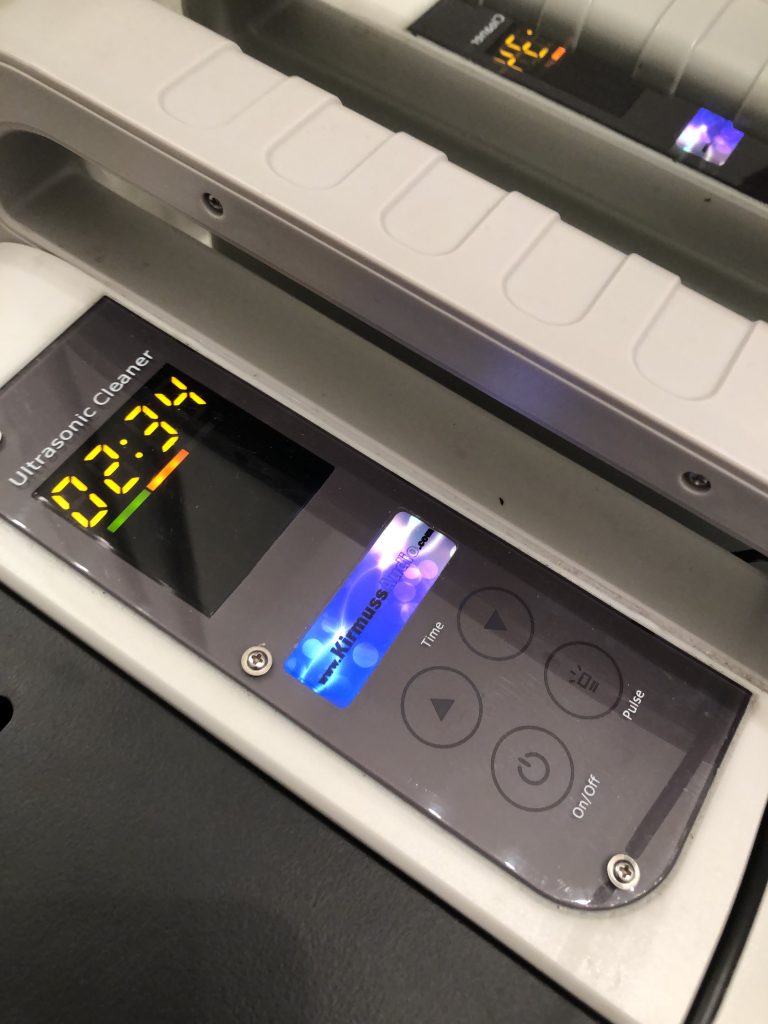
The system included the following components:
- Reference PC: Kubala-Sosna Emotion PC
- EAR Disc Master Magnetic Drive TT and the EAT Forte S TT
- Helius Omega Tonearm for MC and EAT 12 inch Tonearm for MI cartridges
- Aidas Mammoth Gold MC and the Grado Epoch III MI cartridges
- Cardas Special Order Clear Beyond XL Phono Cables on both cartridges
- Stein Audio Power Conditioner
- EAR 912 Preamplifier
- Townshend Allegri Reference (for a brief listen)
- EAR 890 Amplifiers (2)
- UITaudio Interconnects, balanced
- Jorma Origo Speaker Cables
- Marten Bird Loudspeakers
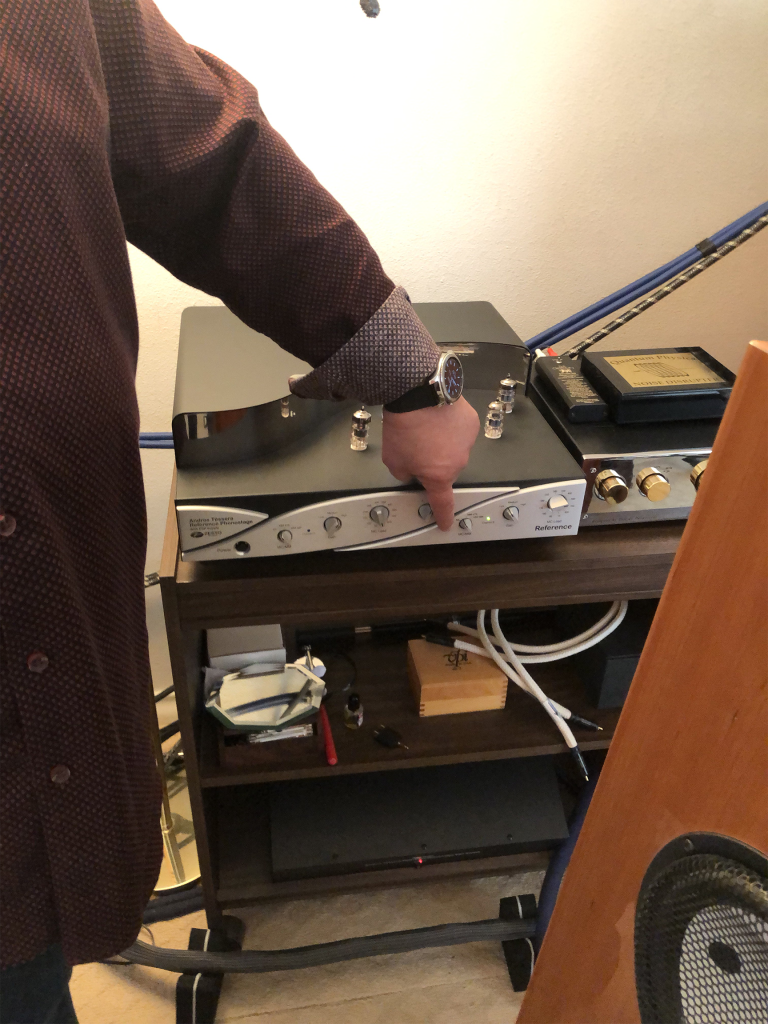
Features, Features, Features!
- Completely new 100% tube analog circuit design with optimized components.
- Dynamic range increased from 108dBV to 116dBV, so the quietest parts are quieter, louder parts are louder.
- Loading on the secondary of the MC transformer to capture the most detail from the cartridge.
- 12 position MC load per channel with more finessed adjustable options like 1000, 800, 700, 500, 400, 350, 300, 250, 200, 150, 100, 50 Ohms.
- Two completely independent dual mono channels, with LED indicators for A and B.
- Gain is improved up to 7dB, which increases the output volume to better match your cartridge to your system.
- The voltage increases from 250V to 300V for more headroom.
- The power increases from 52W to 60W to provide more energy needed to reproduce the highs and lows of music accurately.
- The amps increase from 3.4 A to 8 A to provide more current to the tubes.
- Maximum output improved from 8V RMS to 12V RMS increases the headroom to allow more musical peaks like trumpet and drums.

Quieter Features
- New 12DW7 tubes improves the amplification to better drive the output tubes which gives you lower noise, more headroom and lower distortion.
- Dual chassis external power supply.
- New Toroid design ESP Supply replaces the linear regulated power supply which generates significantly less noise by concentrating the magnetic fields.
- The dark black noise levels went from -90dB to -95dB.
- New PCB layout with significantly more grounding for lower noise.
- Dual chassis with 3-meter RFI filtered umbilical cable to eliminate external noise.
- Dedicated output tubes driving high quality output transformers to create a true differential low impedance output for lower noise and ideal transfer of power to the preamp.
- True floating ground, transformer balanced XLR inputs and outputs.
- New grounding throughout to further reduce the internal and external noise.
- Switching on relays so there’s no digital chatter.
- Easily adjustable MC "Load on the fly" without klicks or pops so you can hear the change
- Elegantly designed 16-gauge steel enclosure to help isolate the electronic "chatter" from nearby equipment.
- Ground lift switches on the MC inputs on each channel to prevent noisy ground loops
- All the RCA and XLR connectors are Gold plated for better conductance and lower corrosion.
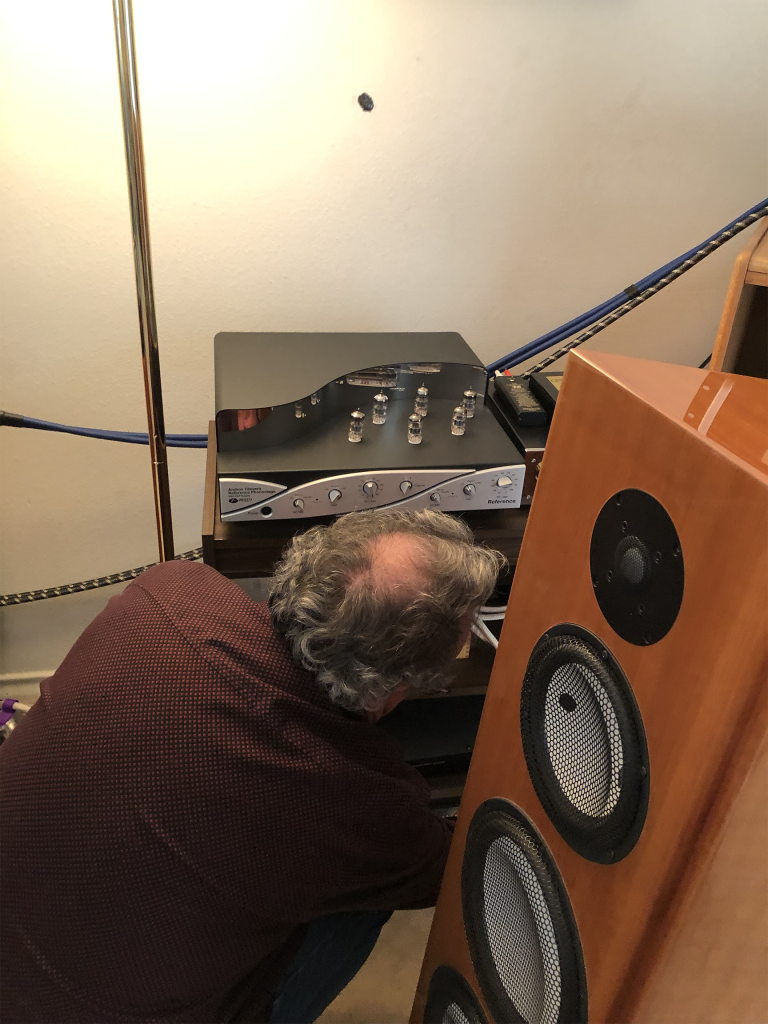
George Counnas doing the hookup of the Zesto Audio Téssera Reference Phonostage
Other Features
- Accommodates 4 tonearms, 1 MM and 1 MC per channel.
- All settings are saved when you switch between channels.
- More energy efficient Standby power that reduces the drain from 7w to 0.5W.
- All switches and knobs are easily accessible, nothing hidden inside to adjust.
- Recessed RCA connectors are durable and will hold up to the typical Audiophile who loves to change their configuration.
- Each unit is hand built "Made in the USA."
- 50-hour factory burn in on all circuits and vacuum tubes before final testing.
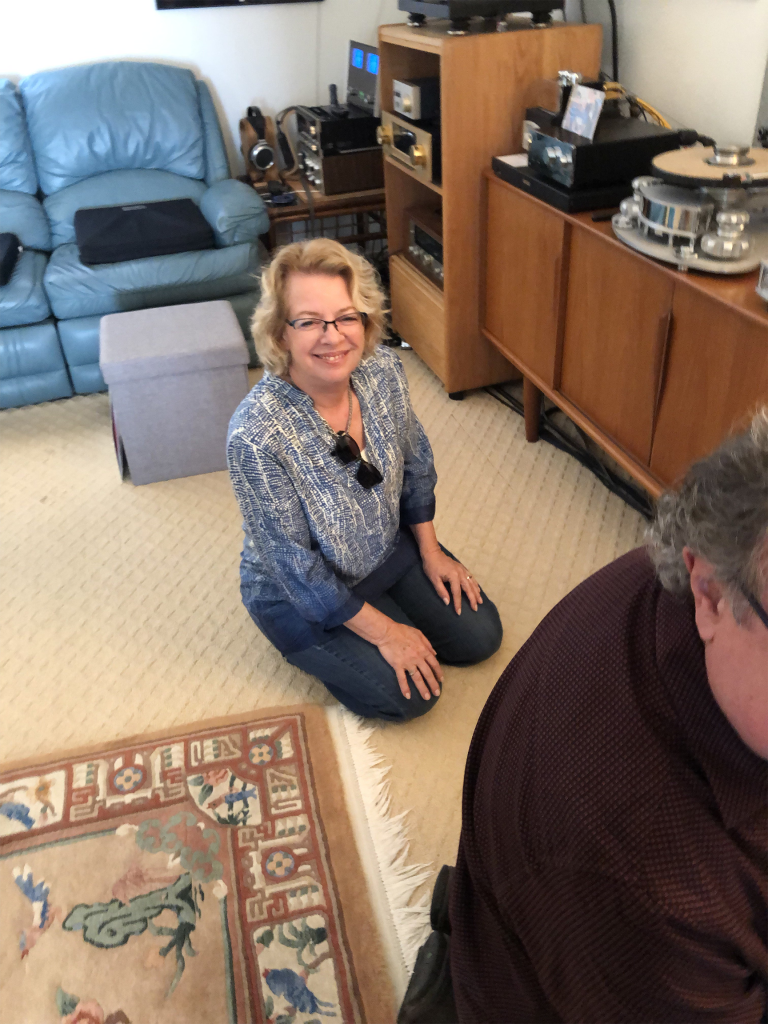
Carolyn keeping an eye on George!
The Reference is still the only phonostage I have used or tested with dual ground switches to allow the left and right channels to be independently grounded or floated as required for maximum quiet. It sure works for the background was jet black quiet on my best records.
I was able to use the high output for both cartridges giving me the best dynamics without sacrificing quiet levels. The fit and finish are flawless, and the tube dampers I mentioned are supplied by Zesto. I tested the balanced and RCA outputs of the Reference and found minimal differences in favor of the balanced in a 2-meter cable run. A number of preamplifiers on the market are faux balanced or just RCA inputs, so the Reference will yield its magic in either application. The Reference has balanced inputs which I did not try. It is designed to maximize both input varieties so no worries. A full-size Owner's Manual, complete, well written and illustrated, is provided with the Reference.
The Music
The Téssera Reference is extremely detailed and capable of huge dynamics without homogenizing the soundstage. It is also the best Zesto phonostage yet for micro delicate nuances that make LP listening the king of reproducing music in the home. No exaggeration; records sound real with the Reference. After nearly three months of listening, I am truly satisfied and delighted as never before by my LP collection. As Clint Eastwood once said (applied to the Reference), "What a machine!" I believe that the Reference is the first Zesto phonostage I would consider a heritage phono preamplifier; that will be passed down in the family to a second generation of LP lovers.
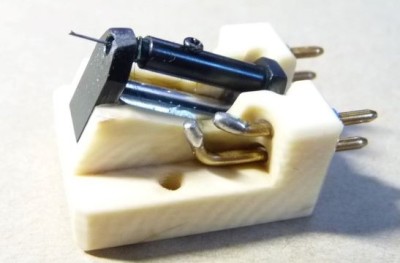
The Aidas Mammoth Gold MC cartridge requires a precise VTA for best performance. The Reference allowed me to precisely re-adjust the VTA to just the right angle for incredible performance. What you are seeking is a slightly dull sound in the highs in setting the VTA which will yield maximum realism with 180-gram LPs. The lower noise levels of the Reference enhanced clarity when tuning by ear. This cartridge is nude with no right angles convenient for setup so listening is key.
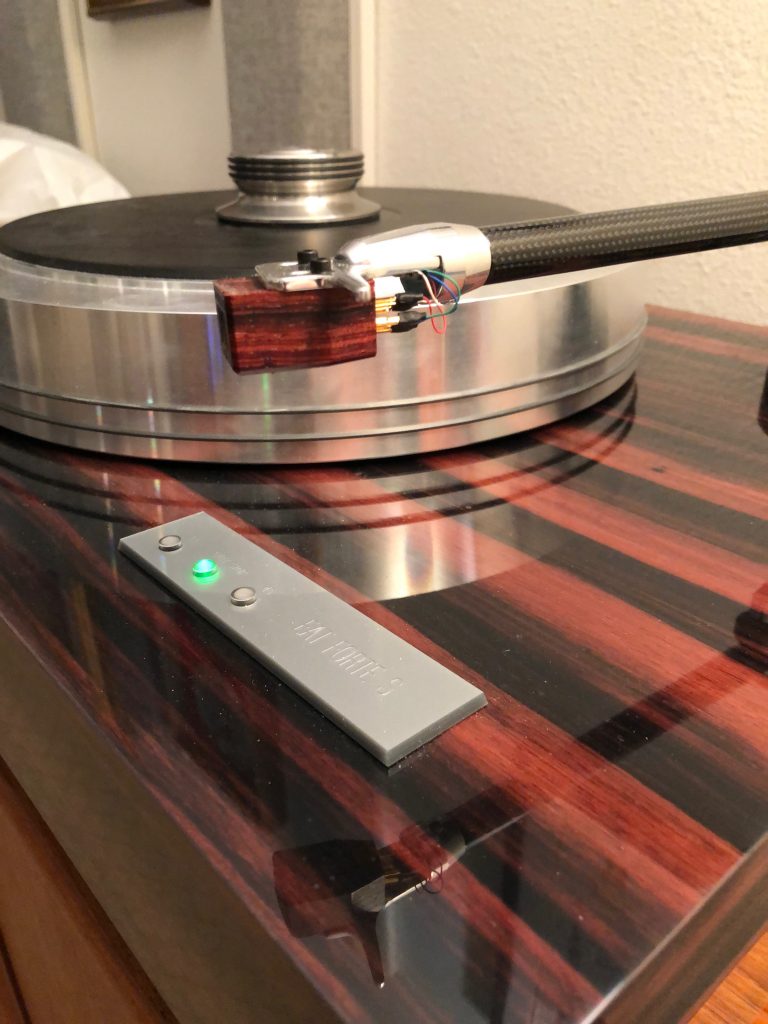
The Grado Epoch III was spot on with the VTA. What was special was having a more powerful MI or MM output to select with the Reference to bring the Grado at one mV output at 47k ohms to concert volume levels without a step-up transformer. This is the best way to enjoy its legendary smoothness and elegance. The Andros Deluxe II will do this as well, but to a lesser degree.

A Few Special Reference LP Selections
The Royal Ballet, RCA Victor, LSC 6065, Ansermet, Analogue Productions
If you do not audition this fabulous 1959 recording, you have not really heard your cartridge or phonostage. With the Aidas, the massed violins were more numerous and weightier with the Reference than I recall with any other. I was entranced by their rhythm and beauty. The harp and flute renderings were very beautiful and most realistic. With the Grado, the supremely broad soundstage wanted to pull the sheetrock off my listening room sidewalls. I loved that. Additionally, with both cartridges, imaging front and rear was razor precise and lovely to hear. Quite fun when the subway went by in the soft passages which were faithfully recorded on a few of the cuts in London.
Wonderful Sounds of Female Vocals, LA&OC Audio Society Production with Analogue Productions on silver high output vinyl, APP 122
You just cannot beat vocals for identifying the problems in your system, especially female vocals, an audiophile favorite. I particularly like the Dusty Springfield cut "The Look of Love" for comparisons. With the Aidas MC was all extreme definition and bigness. It was like an MRI for an LP. Fun to hear but not overly involving. With the Grado, she was standing in my listening room singing to me. She was imaged perfectly and was rounded like alive. You could almost see and hear behind her. The surface was quieter, while making the music pop. The horns were very smooth and huge, too. Organic to the max.
Greensleeves, an LA&OC Audio Society Production and Impex Records Production, on ultra-high-output red vinyl, TBM5011
An ultimate reference LP featuring Shoji Yokouchi Trio with Yuri Tashiro on guitar...need I say more? If the instruments are not exactly alive and fixed in your listening room, you have a problem. I did not. The Aidas was even better at localizing the instruments than the Grado. The Hammond B3 organ with its Leslie speakers is something to hear with the Grado. The solid Grado bass to the center of the earth is magnificent. I loved it on the Reference. Maybe the best ever. The opening passages on the guitar are ethereal and suave. The Reference is killer with MM/MI cartridges with its powerful smooth and elegant gain at 47k ohms.
Quibbles
I would have liked a MM/MI setting for 15k ohms for my London Reference MI Phono Cartridge, but that's just me, more than likely. Not many of those around.
Summary
The Zesto Audio Andros Téssera Reference Vacuum Tube Phonostage Preamplifier is the reimagined and redesigned top offering from 10-year-old Zesto Audio, with unique and exciting tube choices and usage, mammoth functionality, enormous dynamic range, a musical verisimilitude, and mellifluous presentation rare at any price you may be willing to pay. I tried to identify anything that might indicate a shortcoming in any parameter and failed. Zesto even managed to maximize its premium JJ tubes to the extent that replacing them with expensive NOS types were unnecessary. This is no small accomplishment, I assure you.
Though one might consider the Reference expensive, it delivers the musical goods, and does accommodate four tonearms simultaneously (Téssera is four in Greek) with accompanying adjustments for everything, and memory set, too. For the first time in years, I can rightly say you get your monies worth with the Téssera Reference (or the "T Ref," as George Counnas calls it).
Congratulations to Zesto Audio for a stellar Reference phono offering for the pickiest audiophiles! I extend my most humble and sincere statement: the Zesto Audio Andros Téssera Reference Vacuum Tube Phonostage Preamplifier is most highly recommended, without reservations.

Zesto Audio Andros Téssera Reference Vacuum Tube Phonostage Preamplifier
Retail: $18,000
Zesto Audio
3138 Calle Estepa
Thousand Oaks, CA 91360
Engineering
George Counnas
805.807.1840
Sales and Marketing
Carolyn Counnas
805.807.1841
All photographs courtesy of Bob Levi, except Grado, courtesy of Grado Audio.





